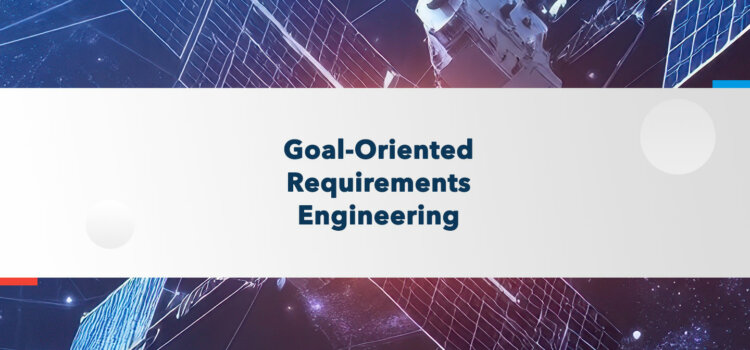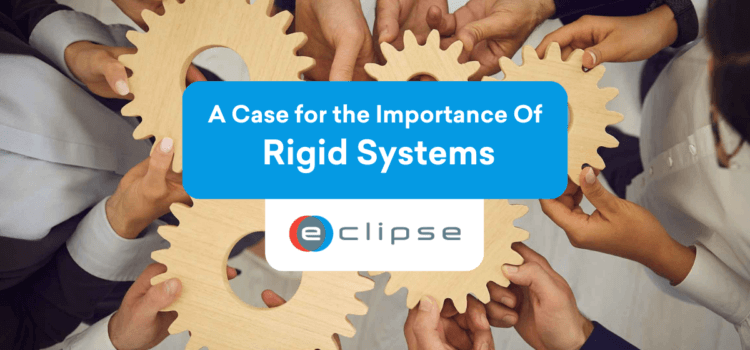
Goal-Oriented Requirements Engineering: Starting from your Product Goal
05 Jun, 2025
In many project environments, teams often begin with a clear picture of the end goal or desired product outcome. This approach demands a reverse-engineered method for defining requirements, one that aligns deliverables and technical details with strategic objectives.
Known as goal-driven requirements engineering, this process ensures that every specification is rooted in tangible business or user value.
This article outlines the structured process for translating product goals into requirements, explains what product goals are, and details the steps to craft actionable, traceable requirements from them.
A top down approach to Requirements Setting
When starting from product goals, the requirements-setting process involves several deliberate stages. The following is a typical process you can follow:
- Clarify the end goal: The process begins with articulating the final outcome, often described in terms of performance, user impact, or business value.
- Break down the goal: The product goal should be broken down into sub-goals, each addressing a component, system, or function.
- Identify stakeholders challenges: Each goal may have different stakeholders whose needs and constraints shape the nature of the requirements. Users, customers, regulators and engineers all have different challenges.
- Formulate requirements: This step involves translating goals into specific, testable, and traceable requirements categorized as functional and non-functional.
- Review, validate, and iterate: Stakeholders must review and validate the requirements to ensure they remain aligned with the original goal.
- Trace and manage: Throughout the lifecycle, requirements are tracked and modified as needed, maintaining linkage to the product goals they serve.
This top-down process ensures that each requirement has a rationale and contributes to the larger vision.
What are Product Goals?
Product goals are strategic targets that define what the product should achieve from a business, user, or operational standpoint. They are often qualitative and forward-looking, but can be made measurable through key performance indicators (KPIs).
Types of Product Goals:
- User-centric: Enhance user satisfaction or engagement (e.g., “Reduce user onboarding time by 50%.”)
- Business-oriented: Increase revenue, market share, or compliance (e.g., “Achieve GDPR compliance for EU markets.”)
- Technical performance: Improve system scalability or efficiency (e.g., “Support 100,000 concurrent users with ≤ 200ms latency.”)
Product goals serve as the north star for the development process, influencing decisions across design, implementation, and quality assurance.
Setting Requirements Based on Product Goals
Once product goals are well-defined, the task shifts to transforming these high-level intents into implementable requirements. Here’s how this transformation occurs:
1. Decompose the goal into actionable sub-goals
Break the product goal into smaller, manageable sub-goals. For example, a goal to “improve application speed by 40%” may decompose into:
- A. Optimizing database queries
- B. Reducing front-end load times
- C. Implementing caching mechanisms
2. Derive functional requirements from sub-goals
For each sub-goal, define the specific behaviors the system must perform. These are the functional requirements.
For sub-goal C (Implement caching):
- “The system shall store API responses for frequently accessed data in an in-memory cache.”
- “The system shall automatically invalidate a cached item after 15 minutes.”
3. Define Non-Functional Requirements for the Overall Goal
Describe the performance, reliability, and usability criteria that define success for the main goal. These are the non-functional requirements.
For the main goal (Improve speed by 40%):
- “The average server response time for API calls shall be under 200ms.”
- “The application’s main dashboard shall achieve a Google PageSpeed score of 90 or higher.”
- “Under a simulated load of 500 concurrent users, the 95th percentile page load time shall not exceed 1.5 seconds.”
4. Use SMART criteria
Now that we have both functional and non-functional requirements, we want to verify if they are good. Therefore, we check them against the SMART criteria.
Requirements should be:
- Specific
- Measurable
- Achievable
- Relevant
- Time-bound
This ensures they are not only understandable but also verifiable and actionable. Applying the SMART criteria is the quality check. It forces you to refine the drafted requirement to ensure it is specific, measurable, and testable before it goes any further.
5. Maintain traceability
We now have a list of high-quality, SMART requirements. The next question is: How do we keep track of why we are building this?
Every requirement should be traceable back to a product goal. Tools like traceability matrices or requirements management software (e.g., ECLIPSE, Jira, DOORS) are essential for linking each requirement to its purpose.
6. Prioritize based on impact
Now that we have the requirements set, we want to determine which requirements we want to work on first.
Since not all requirements have equal weight. We can use MoSCoW (Must, Should, Could, Won’t) or Value vs. Effort matrices to focus development on requirements that drive the most value toward the goal.
We might decide that optimizing the database is a “Must,” while implementing caching is a “Should,” giving the development team a clear focus for the upcoming work cycle.
Conclusion
Starting with a product goal offers an advantage; it anchors development in outcomes that matter. However, success depends on translating those goals into well-defined, testable requirements that guide the team through the design, development, and validation process.
A structured process that includes goal decomposition, stakeholder alignment, and traceability ensures the project stays aligned with its strategic objectives. In doing so, teams not only meet technical deliverables but also deliver products that fulfill their intended purpose with precision and clarity.
Explore our Requirements Management Solution to streamline your process, ensure traceability, and meet compliance standards with ease.

Desmond Gardeslen
Product Marketing Manager
Passionate about the intersection of space technology, marketing, business, engineering, and innovation.



